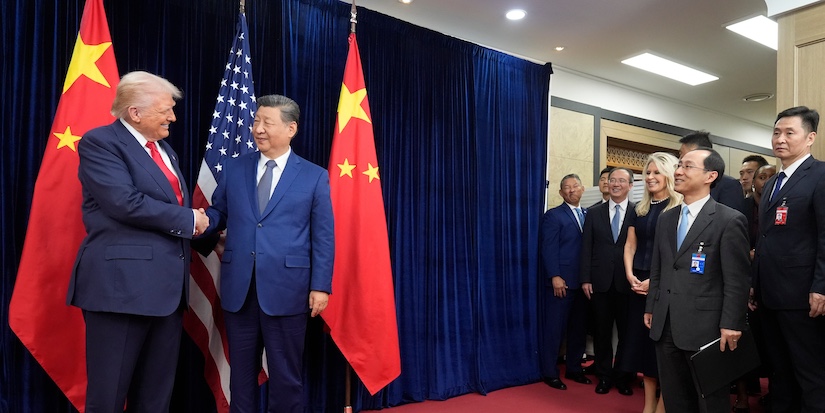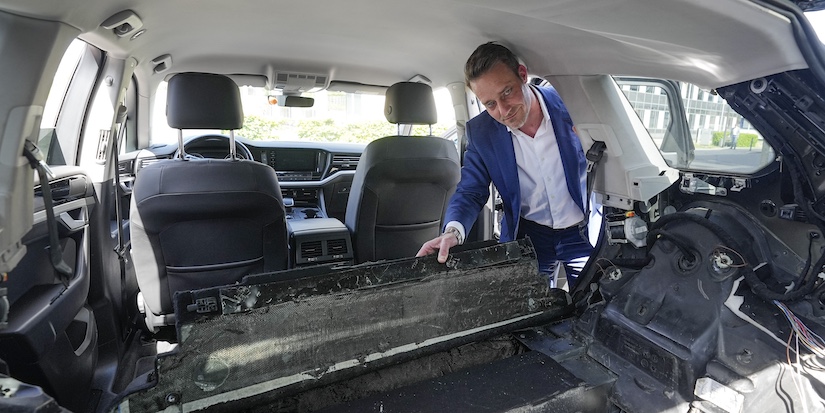Latest News
Arthritis treatment moving in a new direction
When the Canadian Arthritis Foundation hived off its research arm into a separate entity which became Arthritis Research Canada (ARC) it gained a powerful new ally in the Milan and Maureen Ilich Foundation.
When the
Canadian Arthritis Foundation hived off its research arm into a separate entity
which became Arthritis Research Canada (ARC) it gained a powerful new ally in
the Milan and Maureen Ilich Foundation. The foundation donated two floors in
their Progressive Construction building on No. 3 Road near Lansdowne Centre.
More than
just the floor space, the foundation also donated the cost of operating those
floors. That means all money donated to ARC goes straight to our research and
not to overhead, says spokesperson Kevin Allen.
Described
by scientific director Dr. John Esdaile as one of ARC’s stars, Dr. Linda Li
started her career as a physiotherapist before going onto a PhD and a faculty
position in UBC’s department of physiotherapy.
“I fell
in love with doing research in arthritis and the people I work with in the
field,” says Li. Medical discoveries only become valuable when put to use. That
is why Li aims to make sure that patients and doctors learn about new scientific
knowledge, like the proven value of exercise in arthritis.
“That’s
knowledge translation,” she says.
Li’s
latest research project looks at ways to get creaky joints moving to keep the
cartilage, the cushion in our joints, healthy.
She says
cartilage is like a sponge so, just as you repeatedly squeeze a sponge in clear
water to clean it, the only way to flush nutrients through the cartilage is to
move the joint. The pressure and release when you move a joint flushes the
cartilage with the natural fluids it needs to be healthy.
“Our
study is to look at what it takes to develop the skills and habit to be fit,”
she said.
Li
designed this project because, “Inactivity is the biggest risk to today’s
society for all chronic diseases including arthritis. In fact, not being active
puts you at greater risk for developing osteoarthritis, the most common kind of
arthritis.”
Li’s new
study has three components. The first is educational. Patients learn why they
need to move to keep their arthritis in check.
“We are
trying to instill the concept that moving is good for your joints. We talk
about, ‘Move more. Sit less.’ But we are not prescribing a specific activity or
exercise.”
In the
second part of the project, the participants meet their physiotherapist who
will encourage them throughout the project, helping them set realistic goals,
how to manage pain and how to know the difference between exercise that hurts
their joint and exercise that helps them heal. They will then meet by phone
every two weeks for a couple of months.
The third
component of the study involves an electronic activity tracking device known as
a Fitbit for each participant so they and their physiotherapist can tell if
their gradual fitness plan is working. If a participant doesn’t reach their
goals, they can work with their physiotherapist by phone to see what got in the
way and to set more realistic goals.
“If the
goals weren’t realistic, we can dial them back a bit,” says Li. If the
participant hits all their goals, activity can gradually increase and with it,
joint health.
With the
use-it-or-lose-it philosophy now supported by good science, Li says, “We want
to help people with arthritis, who are not physically active, become more
active.”
Li loves
her research: “I like the complexity of it. The field is full of really good
people, colleagues, and mentors so once you get into it, you don’t want to
leave.”
































